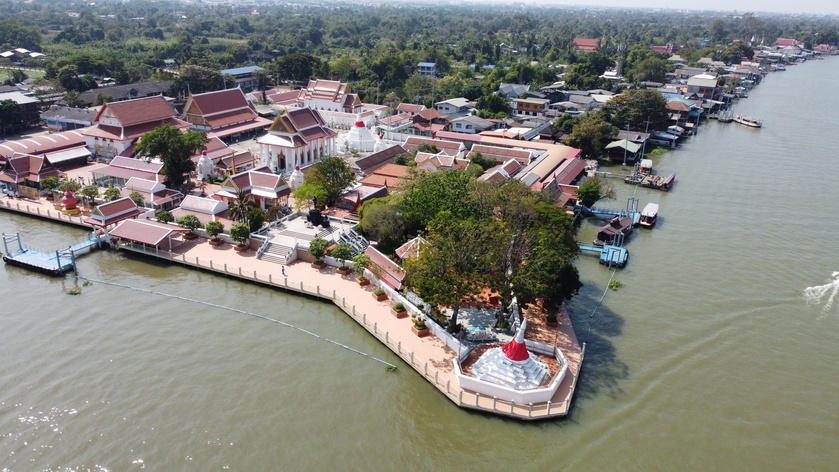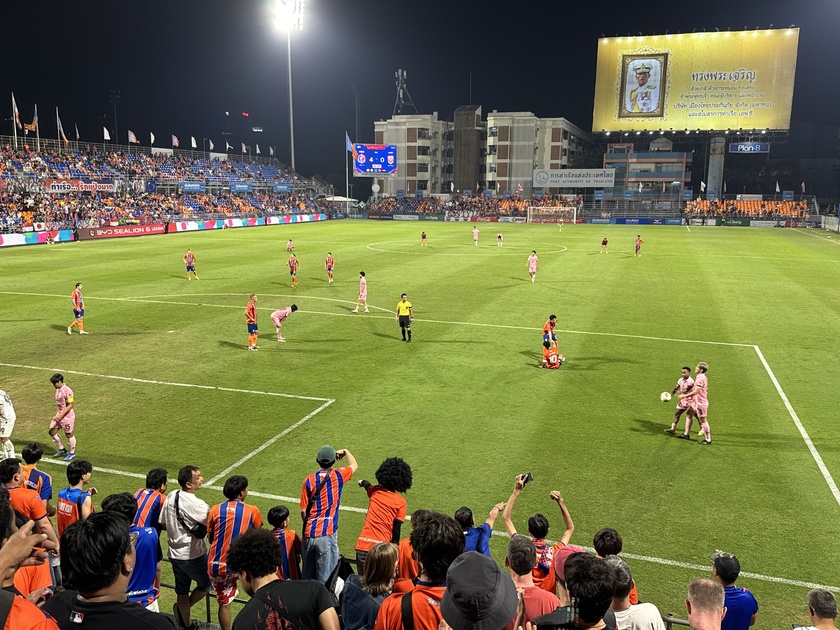Koh Kret เกาะเกร็ด is a small island in the Chao Phraya River in Nonthaburi Province, Thailand. It is around 3 km long and 3 km wide with an area of over 4.2 square kilometers. It has seven main villages, the largest and most populous being Ban Mon. The island is best known for Thai-Mon people who make pottery for a living. The island is only accessed by ferries.
Koh Kret was originally a meander located on the Chao Praya river. Due to Chao Praya river's curvy path, ships would take longer to reach Ayutthaya, Siam's capital at the time.
During the reign of King Thaisa, the king wanted to reduce shipping time and improve the kingdom's economy. He planned a canal which would bypass the meander and act as a shortcut for maritime transport. The canal was dug in 1722, requiring around 10,000 men and taking over a month to complete. After the canal was dug, shipping to Ayutthaya became faster and the canal was called "Klong Lat Kret" by locals. As time passed, the canal became ...
Port FC vs Sukhothai FC match in the Thai League 1 (2025–26 season) January 10, 2026, at PAT Stadium in Bangkok.
Port FC delivered a dominant and professional performance, securing a convincing 5-0 victory over Sukhothai. The home side took complete control early, building a commanding 3-0 lead by halftime through clinical finishing and strong play. The second half was more controlled and low-key, as Port managed the game to protect their advantage while still adding flair. Two late penalties helped inflate the final scoreline, providing some extra gloss to an already decisive win.
This result gave valuable minutes to several squad players, including league debuts for some and a first league appearance of the season for key figure Bordin Phala. It was a solid, commanding display from the home team.
Port FC vs Sukhothai Thai League Football January 10th 2026 - Start of the Second Half of the Season
Port FC vs Sukhothai FC match in the Thai League 1 (2025–26 season) January 10, 2026, at PAT Stadium in Bangkok.
Port FC delivered a dominant and professional performance, securing a convincing 5-0 victory over Sukhothai. The home side took complete control early, building a commanding 3-0 lead by halftime through clinical finishing and strong play. The second half was more controlled and low-key, as Port managed the game to protect their advantage while still adding flair. Two late penalties helped inflate the final scoreline, providing some extra gloss to an already decisive win.
This result gave valuable minutes to several squad players, including league debuts for some and a first league appearance of the season for key figure Bordin Phala. It was a solid, commanding display from the home team.
Port FC vs Sukhothai Thai League Football January 10th 2026 - Start of the Second Half of the Season
January 10, 2026, marks National Children’s Day in Thailand (วันเด็กแห่งชาติ), and the Royal Thai Air Force (RTAF) is hosting one of the most popular and exciting events at Don Mueang (specifically at Squadron 601, Wing 6, opposite Don Mueang International Airport, along with the nearby Royal Thai Air Force Museum and Thung Si Kan small airfield).
This annual air show is a highlight for families, especially children, offering thrilling aerial displays, close-up views of aircraft, and various fun activities to inspire youth and showcase Thailand’s air defense capabilities. The event is free to attend and draws huge crowds—often over 100,000 people!
This is a free event and really a lot of fun for everyone, not just military enthusiasts.
F-16 Fighting Falcon: RTAF Air Show Children’s Day 2026 การแสดงบินวันเด็ก กองทัพอากาศ 2569 Bangkok










































